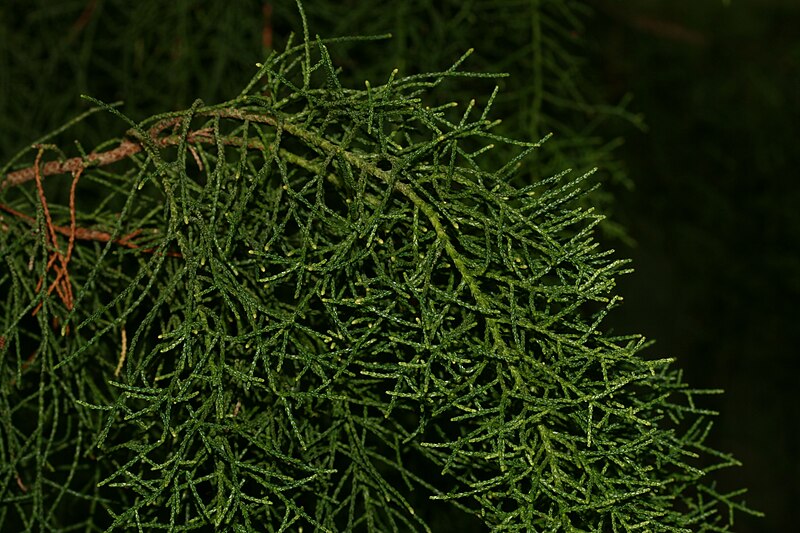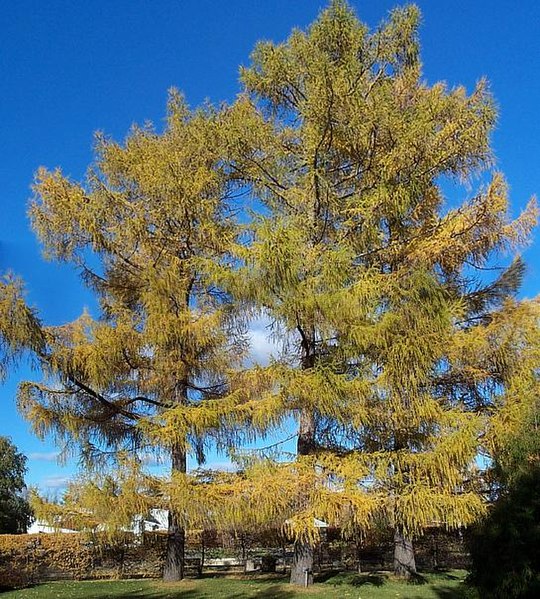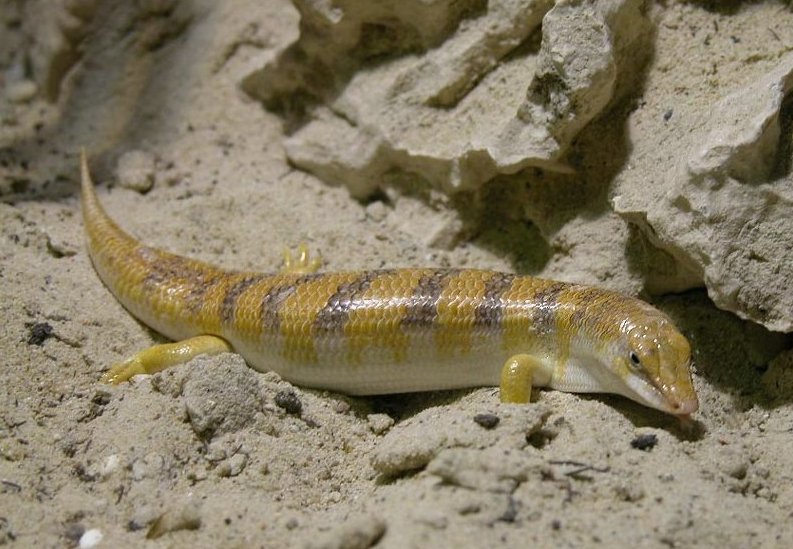Across the world, some plants have defied time, surviving for thousands — even tens of thousands — of years. These ancient organisms have withstood climate changes, natural disasters, and the test of centuries, adapting in incredible ways to ensure their survival. From resilient trees and clonal shrubs to hardy mosses and unique desert plants, each of these botanical wonders tells a story of persistence and adaptability. Many of these plants are found in extreme environments, which have shaped their unique characteristics and lifespans. By understanding these ancient species, we gain insights into the remarkable resilience of life and the hidden history written within each leaf and branch. Here’s a look at some of the oldest plants still alive on Earth today.
Jurupa Oak (Quercus palmeri)

The Jurupa Oak, found in California, is estimated to be around 13,000 years old, making it one of the oldest known clonal oaks. This resilient shrub has adapted to the arid conditions of its environment by growing slowly and relying on clonal reproduction. Unlike many plants that reproduce with seeds, this oak regenerates itself through sprouting new shoots from its roots. The age of the Jurupa Oak was determined by analyzing its growth patterns and the soil around it. Surviving multiple climate changes, it has endured extreme droughts and fires. The Jurupa Oak is an extraordinary example of a plant adapting to survive in harsh conditions over thousands of years. Its tenacity has earned it the status of one of California’s oldest living plants.
Pando (Populus tremuloides)

Pando, also known as “The Trembling Giant,” is a clonal colony of quaking aspens estimated to be 80,000 years old. Located in Utah, it is considered the heaviest and oldest living organism in terms of its extensive root system. Despite appearing as individual trees, each trunk is genetically identical and connected to a massive underground root network. Over millennia, Pando has survived by continually sending up new shoots even as older ones die off. Climate change and grazing threats have, however, put Pando at risk in recent years. Conservationists are working to protect this ancient organism from further harm. Pando’s remarkable age and size make it one of the most extraordinary examples of plant longevity.
Tasmanian Huon Pine (Lagarostrobos franklinii)

The Tasmanian Huon Pine, a slow-growing conifer, is believed to be around 10,500 years old. This ancient tree species is found in Tasmania and is known for its durable, aromatic wood. It grows at an extremely slow rate, which has contributed to its exceptional longevity. In the wild, Huon Pines often thrive near rivers and in wet forest areas. Though individual trees don’t live that long, the species reproduces clonally, with new growth sprouting from ancient roots. This regenerative quality has allowed some Huon Pine clonal colonies to exist for thousands of years. Revered for both its age and unique properties, the Huon Pine is a true survivor of the ages.
Welwitschia (Welwitschia mirabilis)

Native to the deserts of Namibia and Angola, Welwitschia is estimated to be between 1,000 and 2,000 years old. This plant is notable for its long, sprawling leaves that grow continuously from its base. Welwitschia has evolved to survive in one of the harshest environments on Earth, enduring extreme drought and heat. Its deep root system allows it to access water deep underground, which is crucial for survival. Welwitschia’s leaves can reach lengths of several meters, giving it a unique appearance that has intrigued botanists for centuries. Unlike most plants, it only grows two leaves, which persist for its entire life. The resilience of Welwitschia is a testament to nature’s adaptability.
Methuselah Tree (Pinus longaeva)

The Methuselah Tree, a bristlecone pine in California, is estimated to be around 4,850 years old. Growing in the White Mountains, this tree thrives at high altitudes with cold, harsh climates. Methuselah’s remarkable age is due in part to its slow growth and ability to survive with minimal nutrients. Its wood is dense and resistant to decay, allowing it to persist for millennia even as parts of the tree die off. The tree has witnessed countless seasons and changes in climate. Named after the biblical figure, it stands as a symbol of endurance. Methuselah’s longevity is unmatched among non-clonal plants.
Old Tjikko (Picea abies)

Found in Sweden, Old Tjikko is a clonal Norway spruce that is approximately 9,560 years old. This spruce tree is located on Fulufjället Mountain and regenerates by sending up new shoots from a central root system. Although individual trunks die off, the root system has survived for millennia. Old Tjikko’s age was determined through carbon dating, revealing it has been alive since the last Ice Age. Its remarkable adaptation to cold climates has helped it endure for centuries. Standing alone in a mountainous region, it continues to survive against the odds. Old Tjikko exemplifies resilience in one of the world’s oldest forests.
Fortingall Yew (Taxus baccata)

The Fortingall Yew, located in a churchyard in Scotland, is thought to be between 3,000 and 5,000 years old. This ancient yew has become entwined with local legends and myths due to its incredible age. While it has been heavily pruned and weathered over the centuries, the tree continues to grow and regenerate. Its dark green foliage and thick trunk are characteristic of yews, which are known for their long lifespans. The Fortingall Yew’s age was estimated based on historical records and dendrochronology. The tree’s presence in a sacred location has only added to its mystique. It remains one of Europe’s most revered ancient plants.
Jomon Sugi (Cryptomeria japonica)

The Jomon Sugi, a cryptomeria tree found in Japan’s Yakushima Island, is estimated to be between 2,000 and 7,200 years old. This tree is Japan’s oldest and largest conifer, with a height and trunk girth that commands respect. The humid, forested environment of Yakushima has provided an ideal setting for the tree’s growth. Over the centuries, it has withstood numerous typhoons, earning it a legendary status among locals. The Jomon Sugi is a protected national treasure, drawing thousands of visitors each year. Its ancient bark and roots have weathered the test of time. The tree is both a symbol of resilience and a reminder of nature’s wonders.
Box Huckleberry (Gaylussacia brachycera)

Box Huckleberry, found in parts of the eastern United States, has an estimated age of over 13,000 years. This low-growing shrub reproduces clonally, allowing it to survive over vast spans of time. Unlike many plants, the Box Huckleberry does not spread through seed but rather through an extensive network of roots. Its small, glossy leaves and blue berries make it a visually appealing plant. Box Huckleberry has adapted well to the temperate climates of North America. Its clonal nature has allowed it to form large colonies that cover significant ground. This plant’s ancient lineage reflects the resilience of the North American flora.
Quaking Aspen Clone (Populus tremuloides)

Located in Fishlake National Forest, Utah, this clonal colony of quaking aspens is thought to be around 80,000 years old. Often referred to as “Pando,” this colony is interconnected by a single, massive root system, making it one of the heaviest organisms on Earth. Though it appears as thousands of individual trees, they are genetically identical and share one root network. Pando regenerates by sprouting new stems from its ancient roots, ensuring its survival through harsh conditions. This colony has survived changes in climate and numerous threats, but grazing animals and human impact have recently endangered its longevity. Conservationists are now working to preserve Pando’s unique structure and history. Its impressive age makes it a vital part of Utah’s natural landscape and a scientific marvel.
Zion Curtain Juniper (Juniperus osteosperma)

The Zion Curtain Juniper, found in Utah’s high desert, is estimated to be over 1,600 years old. This ancient tree has survived in an environment where other plants struggle due to extreme drought and rocky soil. Junipers like the Zion Curtain adapt by growing slowly and using water very efficiently. Its twisted branches and dense, resilient bark are symbols of its endurance through centuries. This juniper also plays an essential ecological role, providing shelter and food for wildlife. Despite its age, it continues to grow and thrive, withstanding the region’s harsh conditions. The Zion Curtain Juniper is a reminder of the resilience needed to survive in arid landscapes.
Antarctic Moss (Bryum argenteum)

In the frozen lands of Antarctica, Antarctic moss holds the title of one of the oldest known mosses, estimated to be over 5,500 years old. This moss is uniquely adapted to survive extreme cold and limited sunlight, thriving in one of the most inhospitable environments on Earth. It grows incredibly slowly, with just a few millimeters added each century. Because of its slow growth, the moss has accumulated ice layers over thousands of years, creating a natural protective shield. The moss survives through photosynthesis, relying on brief summer periods for sunlight. Its resilience has made it a valuable study subject for understanding life in extreme conditions. Antarctic moss exemplifies the endurance required for plant life to thrive in the world’s coldest continent.
Siberian Larch (Larix sibirica)

Found in the cold forests of Siberia, the Siberian Larch has an estimated age of up to 2,500 years. This resilient conifer grows in some of the harshest climates, withstanding extreme cold and nutrient-poor soil. Its thick bark and needle-like leaves help conserve water and protect against freezing temperatures. Despite these challenges, the Siberian Larch has flourished, becoming a symbol of strength in Siberia’s wilderness. It also provides shelter for animals and helps stabilize the soil in its region. In winter, its needles turn yellow and fall, a rare trait among conifers, enabling it to save energy during the colder months. The Siberian Larch is a testament to adaptation and survival.
Kauri Tree (Agathis australis)

The Kauri Tree, native to New Zealand, is estimated to be over 2,000 years old. This towering tree grows in the subtropical forests of the North Island and is one of the largest trees in the world. Its thick, rough bark and expansive canopy create a natural shelter for numerous species. Kauri trees produce a highly resistant wood, which has helped ancient specimens survive for millennia. However, the species is now threatened by disease and human activities, and conservation efforts are underway. Kauri trees are revered in Māori culture, symbolizing strength and longevity. These magnificent trees are a reminder of the ancient and diverse ecosystems found in New Zealand.
The Olive Tree of Vouves (Olea europaea)

The Olive Tree of Vouves, located on the Greek island of Crete, is estimated to be between 2,000 and 3,000 years old. This ancient olive tree still produces olives, and its twisted trunk has become a symbol of resilience and heritage. It is considered one of the oldest olive trees in the world and continues to flourish despite its age. The tree has been scientifically analyzed, and its age is celebrated with an annual festival. Over the centuries, it has provided food and oil for countless generations. The Olive Tree of Vouves is also a symbol of peace and longevity in Greek culture. This ancient tree is a living reminder of Crete’s deep agricultural history.
General Sherman Tree (Sequoiadendron giganteum)

The General Sherman Tree, a giant sequoia located in California’s Sequoia National Park, is estimated to be around 2,200 years old. This colossal tree is the largest living tree by volume, with its massive trunk and towering height. Despite its incredible size, General Sherman grows in a relatively limited area where sequoias thrive. Its thick bark helps protect it from wildfires, which have allowed it to survive countless blazes. The tree’s age and size make it a popular tourist attraction and a symbol of longevity. Giant sequoias are known for their impressive height and width, with some branches thicker than ordinary tree trunks. General Sherman is a testament to the enduring strength of ancient trees in North America.
Patriarca da Floresta (Cariniana legalis)

Found in Brazil, Patriarca da Floresta is an ancient tree with an estimated age of over 3,000 years. This species, known as the Jequitibá-Rosa, is native to the Atlantic Forest and is one of the tallest trees in Brazil. It plays a critical ecological role, providing food and shelter for numerous species in its ecosystem. The tree’s dense wood and resilient bark have helped it survive fires and human encroachment. Due to its age and size, Patriarca da Floresta is considered a national treasure. It also symbolizes the endangered state of Brazil’s forests and the importance of conservation. This ancient tree has become an icon of preservation and natural history in Brazil.
Baobab of Sagole (Adansonia digitata)

The Baobab of Sagole, located in South Africa, is estimated to be over 1,200 years old. Known for its iconic swollen trunk, this baobab is the largest in South Africa and one of the oldest known baobabs. It has been used by indigenous communities for centuries as a source of food, water, and shelter. Baobabs are uniquely adapted to store water in their massive trunks, helping them survive droughts. The tree’s hollow interior has provided refuge for both people and wildlife throughout its long life. Sadly, many ancient baobabs have been dying in recent years due to climate change. The Baobab of Sagole remains a powerful symbol of Africa’s unique natural heritage.
Alerce (Fitzroya cupressoides)

The Alerce, also known as the Patagonian cypress, is native to Chile and Argentina, with some specimens estimated to be around 3,600 years old. This slow-growing tree is one of the oldest and largest in South America. Its thick, reddish bark helps it withstand forest fires, while its dense wood is resistant to decay. The Alerce thrives in the cool, temperate rainforests of Patagonia, where it forms dense, towering forests. These trees have been used historically by local populations for timber, but deforestation has placed them at risk. Alerces are now protected, allowing them to continue their ancient growth. They are a cherished part of South American biodiversity, representing both resilience and the need for conservation.
This article originally appeared on Rarest.org.
More From Rarest.Org
Deserts are some of the toughest places for animals to survive, with extreme temperatures, limited water, and scarce food. Yet, natureâs adaptability shines as certain animals have evolved remarkable traits to thrive in these harsh landscapes. Read more.
Muscle cars have a special place in automotive history, known for their powerful engines, bold designs, and thrilling performance. These machines weren’t just about speed, they represented freedom, innovation, and a bit of rebellion, capturing the spirit of their eras. Read more.
Across the world, democracy has deep roots that stretch back centuries, shaping how societies are governed and how people’s voices are heard. While modern democracy often brings to mind recent elections and bustling political scenes, its origins are surprisingly ancient and varied. Read more.



